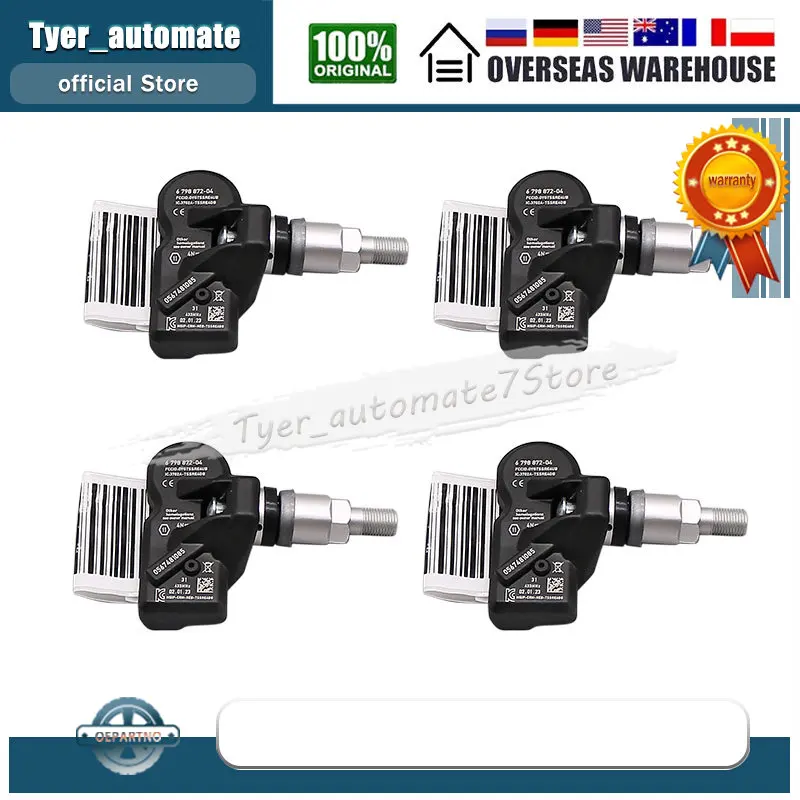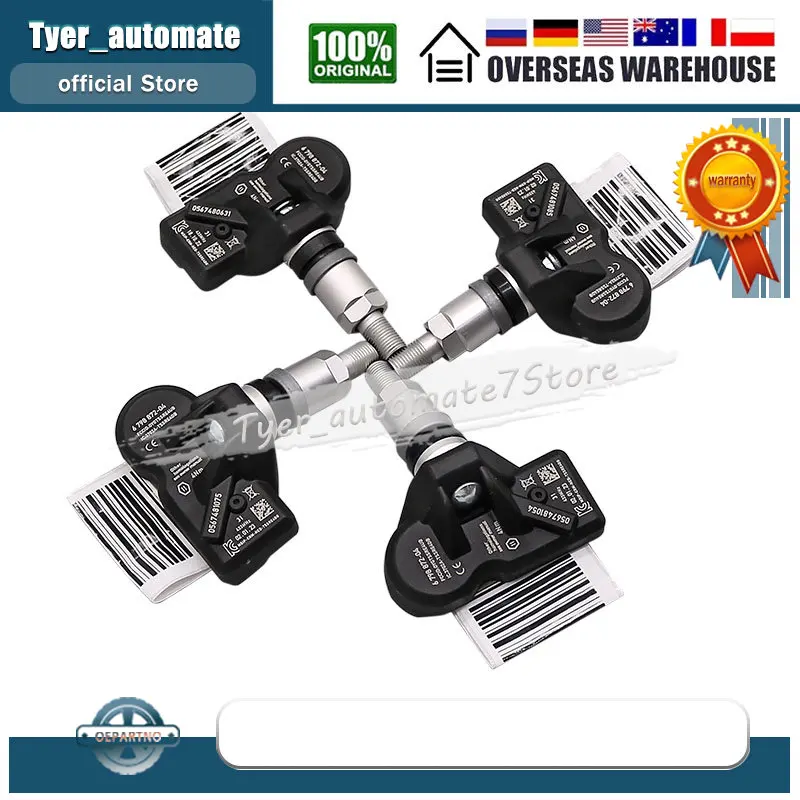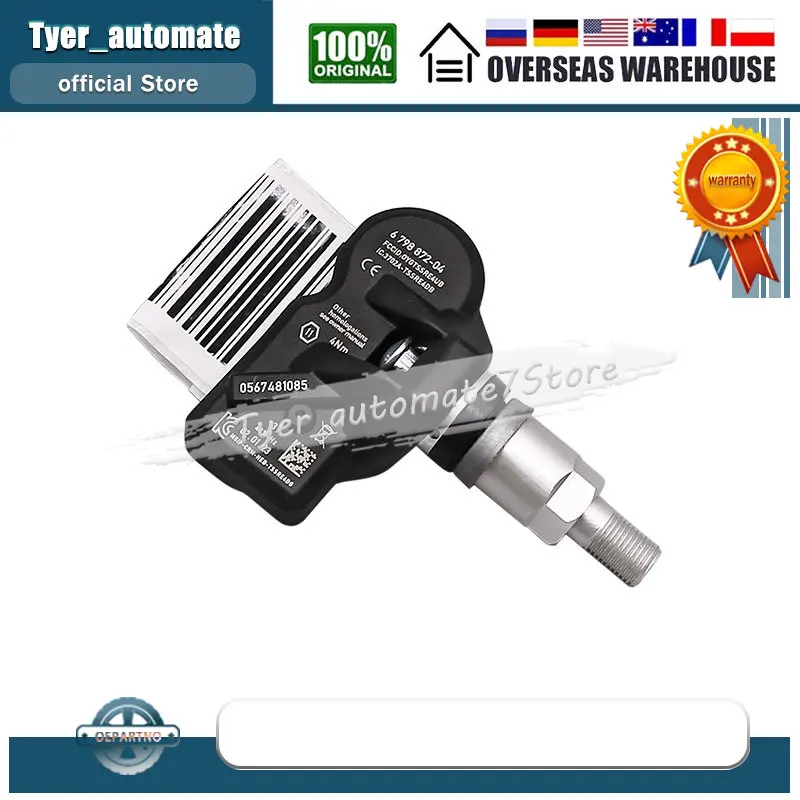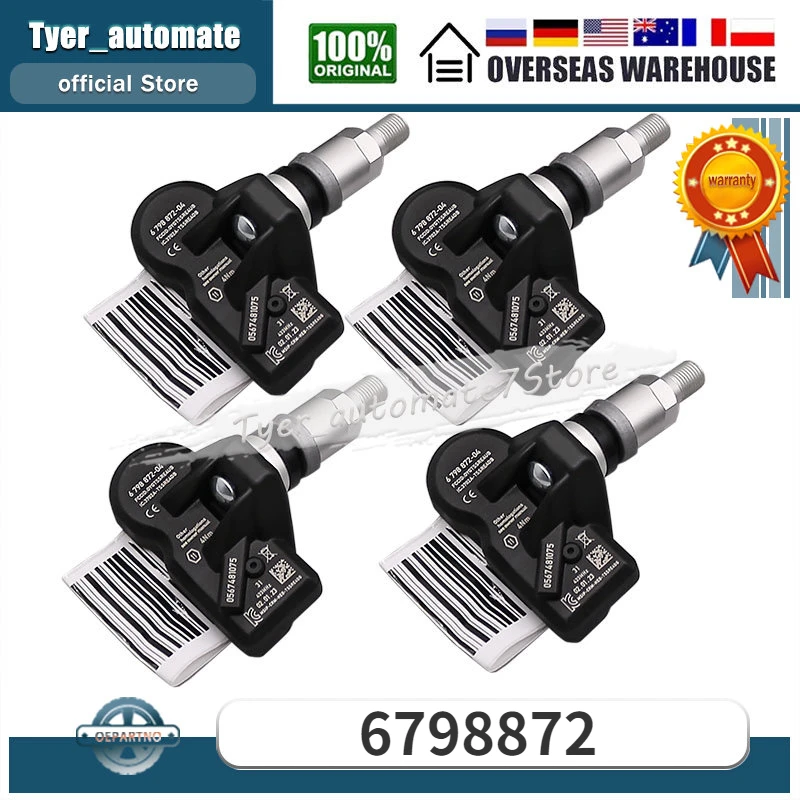
Votre BMW, MINI ou Rolls Royce vous prévient ?
- Solutions TPMS BMW: Changer capteur pression pneus BMW, TPMS défaillant BMW, Diagnostic système de surveillance pression des pneus BMW, Remplacement capteur pneumatique BMW, Prix capteur TPMS BMW série 3, Erreur pression pneus BMW, Capteur TPMS compatible BMW X5, Code erreur TPMS BMW.
- TPMS MINI: Problème capteur pression pneus MINI Cooper, Réinitialiser TPMS MINI, Capteur TPMS MINI Countryman, Prix capteur TPMS MINI Cooper S, TPMS clignotant MINI, Capteur pression pneus MINI, MINI défaut TPMS, Changer capteur TPMS MINI.
- TPMS Rolls Royce: Capteur pression pneus Rolls Royce Phantom, TPMS défectueux Rolls Royce, Système de surveillance pression des pneus Rolls Royce Ghost, Pièces détachées TPMS Rolls Royce, Remplacement capteur TPMS Rolls Royce, Rolls Royce affiche pression pneus incorrecte, Problème TPMS Rolls Royce Wraith, Capteur TPMS Rolls Royce neuf.
- Capteur TPMS 433Mhz (et variantes): Capteur TPMS universel 433Mhz, Capteur TPMS 433Mhz programmable, Installer capteur TPMS 433Mhz, Compatibilité capteur TPMS 433Mhz, TPMS 433Mhz pas cher, Programmer capteur TPMS 433Mhz, Batterie capteur TPMS 433Mhz, Fréquence capteur TPMS.
- Diagnostic et maintenance TPMS: Valise diagnostic TPMS, Calibration TPMS, Réinitialisation TPMS, Détection défaut TPMS, Vérification système TPMS, Maintenance TPMS, Code erreur TPMS, Diagnostic électronique TPMS.
- Sécurité et pneus: Pression correcte des pneus, Sécurité routière et TPMS, Crevaison et TPMS, Prévenir les crevaisons, Gonflage des pneus, Usure des pneus, Pneus hiver et TPMS, Vigilance pression pneus.
- Bénéfices et solutions: Avantages TPMS, Solution capteur TPMS défaillant, Facilité d'installation capteur TPMS, Fiabilité capteur TPMS, Longévité capteur TPMS, Économie de carburant grâce au TPMS, TPMS et sécurité, Pourquoi installer un TPMS.
- Modèles et marques spécifiques: Capteur TPMS BMW série 1, TPMS MINI Cooper, Capteur TPMS Rolls Royce, Compatibilité TPMS BMW X1, Capteur TPMS MINI John Cooper Works, TPMS Rolls Royce Cullinan, Changer capteur TPMS BMW occasion, Module TPMS.
- Comparaisons et prix: Comparatif capteurs TPMS, Prix capteur TPMS, Où acheter capteur TPMS 433Mhz, Capteur TPMS pas cher, Meilleur capteur TPMS, Avis capteur TPMS, Comparaison TPMS original et adaptable, Prix installation TPMS.
- Termes associés: Pneumatiques, Roues, Surveillance, Pression, Capteur, Système, Détection, Alerte, Clignotant, Défaut, Code, Compatible, Programmation, Fréquence, Batterie, Électronique.
🚨 Votre BMW, MINI ou Rolls Royce vous prévient ? Ce capteur TPMS 433Mhz est LA solution !
Touareg, Q7, Cayenne : Votre pare-soleil cassé ? Solution ICI !Oh My God, My BMW Is Trying to Kill Me (Or At Least, Flatting My Tire) – And This Little Gadget Saved the Day!
(A Love Letter to TPMS, and a Rant About Roadside Emergencies)
Alright, let’s be real. Owning a fancy car like a BMW, MINI, or Rolls Royce? It’s a dream, right? Pure luxury, effortless style… until the moment something goes wrong. And when it does go wrong, it usually happens at the WORST possible time. Like, you know, when you're late for a crucial meeting, dressed to the nines, and suddenly your dashboard winks at you with that dreaded, accusatory light… the tire pressure monitoring system (TPMS) warning. Ugh.
The Dreaded TPMS Light - A Sign of Doom (and Empty Wallets)
This isn’t just a minor inconvenience, folks. This is a warning system that’s designed to make you panic. Initially, you feel a slight dread, then worry, and then, if you’re anything like me, a full-blown existential crisis. Is it a flat? Am I stranded? Do I have to call… a tow truck? And let's face it, tow trucks and luxury cars are not friends. They just aren’t.
The Old Days: Pre-TPMS Panic - My Tire-Changing Failures
Before I discovered the beauty (and absolute necessity) of a working TPMS, I was a tire-changing disaster. Let me tell you, the number of times I’ve fumbled with a jack, spun the lug nuts until my knuckles bled, and generally made a complete fool of myself on the side of the road… well, let's just say it's a significant number. Remember the time I almost dropped the entire car onto the ground because I couldn’t figure out how to position the jack properly? Yeah, good times. NOT.
The TPMS Revolution (Mostly) – But at What Cost?
Thank goodness for TPMS! It's supposed to be a guardian angel, alerting you to sneaky tire-pressure drops BEFORE you’re stranded on a desolate highway. It’s modern convenience, right? But here's the rub: these little sensors have a habit of dying. And when they die… well, your dashboard becomes a permanent, glowing reminder of your impending financial doom (because, you know, replacing those things isn't cheap!).
Enter the Savior: The 433Mhz TPMS Sensor! (Finally, a Solution!)
So, after a few years of stressing over that blinking light and emptying my wallet at the dealership, I stumbled upon something that felt like a miracle: a TPMS sensor, specifically the 433Mhz kind, designed for BMW, MINI, and Rolls Royce. I was skeptical. I’d been burned before. But I was also desperate.
The Skeptic's Journey: From Doubt to Delight
Okay, I’ll admit it, I was picturing a complicated installation process that would require a degree in engineering. But the reality? Surprisingly straightforward! I'm not exactly a car mechanic, to put it mildly. I barely know which end of the wrench is which. Yet, with a bit of online research (YouTube is a lifesaver, people!), I found a set of instructions that even I could follow. Honestly, if I can do it, anyone can.
The Installation Tango: My Personal Trial and Error
It wasn't perfect. Let's just say I had a little… hiccup. The first time I attempted to install it, I managed to drop the lug nuts in the mud. (Don’t judge! It was raining!) But hey, even with my fumbling, a little patience, and a lot of online tutorials, I eventually succeed! All the frustration just vanished when I finally switched on the car and the irritating TPMS light turned off. Glorious.
Why 433Mhz Specifically? (And Why You Should Care)
This is where it gets technical, but trust me, it's important. These 433Mhz sensors are designed to be a perfect match for your car's existing system. That means no compatibility issues, no reprogramming headaches (like with some aftermarket solutions). And, crucially, they're often significantly cheaper than the dealership option. This isn't just about saving money, it's about sticking it to them.
Beyond the Light: Peace of Mind and (Possibly) Cheaper Repairs
This isn’t just about fixing a light on your dashboard. It’s about avoiding the stress and, frankly, the fear that comes with potential tire problems. It's about early detection. It's about saving your rims. It's about feeling like you’re in control, instead of being at the mercy of your car's whims.
The Unsung Hero: Preventing the Flat Tire Freak-out (and Other Roadside Nightmares)
Let's paint a picture. It's a Sunday afternoon. You're driving, enjoying the sunshine, listening to your favorite playlist (or, in my case, desperately trying to ignore my kids fighting in the back). Suddenly, the warning light appears. Without a functioning TPMS, you'd be scrambling, pulling over, getting out, checking your tires… likely with that sinking feeling in your stomach. With a working TPMS? A quick glance at the dash, and you know exactly what’s happening. It might be a minor issue, not a full-on disaster.
The Real Cost Savings: Avoiding the Big Bills (and the Even Bigger Headaches)
Replacing TPMS sensors at the dealership? It’s expensive. Seriously expensive. Plus, you have to deal with the endless back-and-forth, the waiting, the feeling of being overcharged. A DIY solution with a reliable 433Mhz sensor? It’s a fraction of the cost. Seriously, it's a small price to pay for peace of mind.
My Personal Conclusion: It’s a Must-Have!
Look, I'm not a car expert. I'm just a regular person who loves their car (and wants to keep it running without going broke). This 433Mhz TPMS sensor has been a game-changer for me. Seriously. It’s given me back a little piece of sanity, and saved me money in the process. If you drive a BMW, MINI, or Rolls Royce, and that TPMS light has been haunting your dreams, then seriously, check this out. You won't regret it. And trust me, your wallet will thank you.

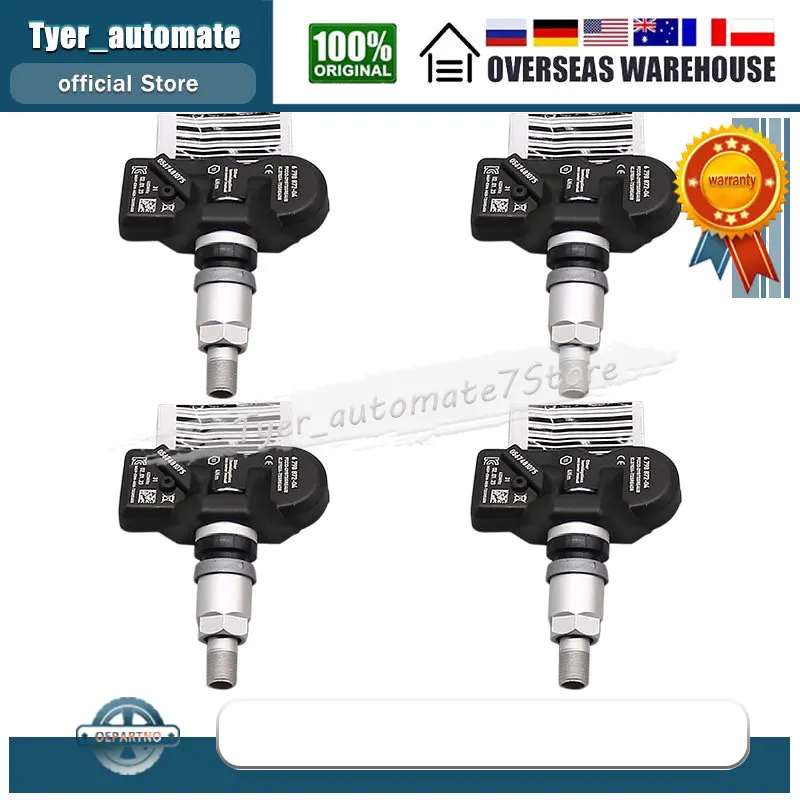
🚨 Votre BMW, MINI ou Rolls Royce vous prévient ? Quoi ??
Oh, là, là… You KNOW that flashing tire icon? The one that looks like a sad little horseshoe? Yep. That's your sign. Your sign that either your tire pressure is off, or, more likely, your TPMS sensor is having a REALLY bad day. And if you drive a BMW, MINI, or Rolls Royce… well, let's just say they can be a bit *particular* about these things. They're like the diva of the car world! They LOVE attention! So if that icon is flashing, get ready for some drama.
C'est quoi, au juste, ce machin de TPMS ? Sounds fancy!
TPMS? Tire Pressure Monitoring System. Sounds all high-tech, doesn’t it? It’s basically a little sensor that lives inside your tire, constantly checking the pressure and beaming the info to your car’s computer. Think of it as your tire's personal health monitor. When things are good you are good, when it's not... hold on to your hats! Because trust me, it’s a life-saver. And also a pain in the… well, you get the idea. One time, I was running late for a really important meeting. My TPMS decided to go off *just* as I was pulling out of the driveway. Talk about dramatic!
Euh… and Why 433Mhz? What's that mean? I barely remember my password!
Ah, the MHz! Don't worry, it's not brain surgery. It's just the frequency your sensor uses to communicate with your car. Think of it like a radio station. 433Mhz is the 'station' your BMW, MINI, or Rolls Royce likes to 'listen' to. Why 433? Honestly, I haven't the foggiest! But it's important because if you buy the wrong frequency, your car won't understand what your tire is saying. It's like trying to order a baguette in Klingon. (Learned that the hard way. Ordered the wrong sensor and ended up staring at that annoying icon for a week…)
I'm getting a warning! What should I *do*? Panic?
Okay, deep breaths. First, don't panic. (Easy for me to say, right?) But seriously, pull over somewhere safe and check your tires. Look for any obvious issues – a flat tire, something stuck in the tread. If all looks okay, get yourself to a gas station and check your tire pressure with a gauge. Your car probably has a sticker somewhere with the recommended pressure. If your pressure is low, inflate your tires. If the warning light *still* on after a little driving, there's a good chance one of your sensors is kaput. Which brings us to... the solution!
And a tip from a seasoned veteran: Keep a tire pressure gauge in your car! It’s like having a safety blanket. I'm not kidding, it's saved me from total meltdowns more than once.
So, this sensor...is it magic? What does it *do*?
Not magic (sadly). It *measures* the air pressure in your tire and sends that info to your car's computer. If the pressure drops below the recommended level, BAM! Warning light! It's simple, but genius in its own way. I had a slow leak once – barely noticeable. The sensor caught it before I did. Saved me a potential disaster on the highway!
Okay, okay, I get it. The sensor thing. Why is *this* sensor 'LA SOLUTION' as the ad says? What's so great about it?
Alright, let's get to the good stuff! This sensor, the 433Mhz TPMS sensor, is presented as a solution because… well, because it *is* a solution! Think of it as the valiant knight rescuing your poor, tire-distressed car from the dragon of low tire pressure. It's designed to be a direct replacement for your faulty sensor, so you hopefully can avoid those dealership charges and those frustrating TPMS warnings. The real win here is peace of mind. And trust me, in the world of BMW ownership (and MINI and Rolls Royce!), peace of mind is *priceless*. The peace of mind? Worth its weight in gold, or at least a decent bottle of Bordeaux.
Can *I* fit this myself? Or do I need to beg my mechanic?
This is the million-dollar question, isn’t it? *Can* you install it yourself? Maybe! It depends on your DIY skills (and patience!). If you're comfortable changing a tire and know how to use a wrench, then YES, absolutely! Many people find it relatively straightforward. If, however, you're more of a "call the mechanic for a lightbulb" kind of person (no judgement, trust me!), then yeah, maybe get some help. You *will* need to know the wheel size and the make and model of your car. Otherwise, it's a gamble.
**Anecdote:** I, for one, am *terrible* with anything mechanical. I attempted it once. Let's just say, the results were… messy, ended up with a flat tire and a very, very unhappy mechanic. He's still laughing about it. So, know your limits!
The tire pressure icon still came on after replacement and drive, what do I do?
* **Go back to basics.** Make sure the tires that are being reported as low are, in fact, inflated to the correct psi. If not, inflate them at a gas station and then drive for a few minutes to refresh the TPMS system. * **Check with your mechanic** Check for anything else that may be going wrong like ABS sensor.
What if I mess it up? Am I doomed?
Look, even if you mess up, it's not the end of the world! Don’t sweat it! Maybe you bought the wrong sensor (been there!), maybe you damaged a valve stem (also been there!), maybe you just… well, maybe you just got frustrated and threw a wrench across your garage (might have happened to me once…). The good news is, TPMS sensors
